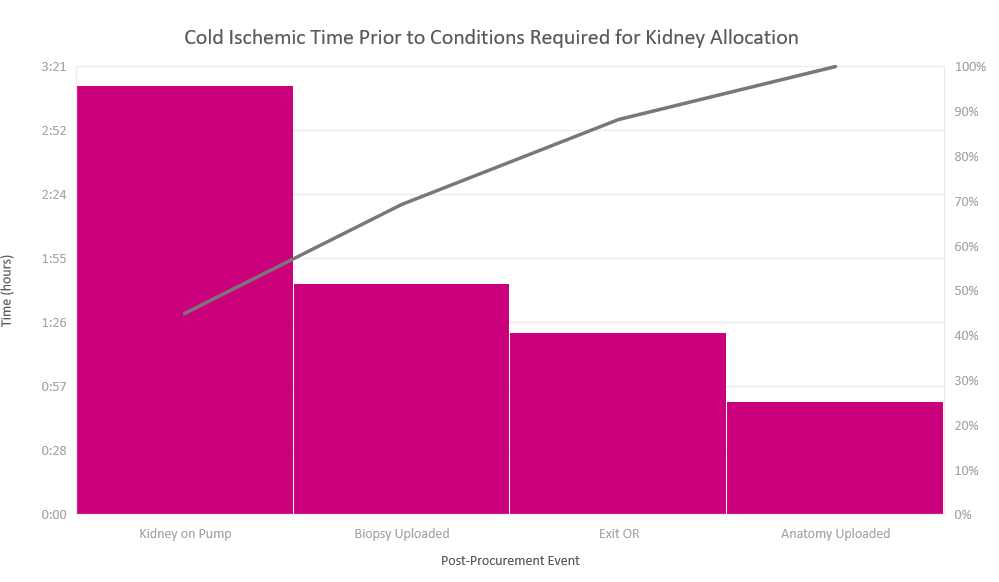Increasing kidney utilization
Amanda Beck1, Bailey Heiting1, Anne Krueger1.
1Organ and Tissue, Versiti, Milwaukee, WI, United States
Our OPO saw an opportunity for improving our process of kidney allocation involving kidneys that meet our internal pump criteria. We previously placed kidneys on pump at our Headquarters (HQ), which we noticed caused an increase in cold ischemic time (CIT) at the start of post case kidney allocation. This project aimed to study if we could decrease the amount of CIT on our kidneys prior to being placed on pump by bringing our kidney pumps to our donor hospitals, thus moving into our allocation phase sooner and consequently decreasing the amount of kidney discards.
Through analysis of our previous process, we identified three main root causes leading to increased CIT on pumped kidneys. These include postmortem care, drive time from our hospitals to our HQ, and the physical location of the kidney pumps. We discovered that our average CIT prior to kidneys being placed on pump was 3 hours and 13 minutes, which we aimed to decrease to under 2 hours. To do so, we changed our process of placing kidneys on pump at HQ after cases to doing so in the OR during procurements.

Our Organ Recovery Specialist (ORS) team is responsible for bringing all necessary supplies from HQ to the OR for our procurement cases. Previously, only necessary case supplies were brought with. This project changed that process to also bringing all supplies necessary to place kidneys on pump in the OR.
ORS staff would place ice and cold water in the ice basin of the kidney pump prior to leaving HQ, allowing the pump to be cooling down throughout our procurement cases. Once kidneys had been procured and ORS staff confirmed that they could be pumped, they would begin preparing the pump while kidneys were being cleaned, anatomy was being complete, biopsies and pictures were being taken, and kidneys were being cannulated. By the time ORS staff was ready to place the kidneys on the pump, the pumps would be cooled to the proper temperature.
The kidneys were then placed on pump within the OR prior to any research procurement, closing the body, and postmortem care. After all these tasks had been completed, ORS staff would upload a set of pump numbers to DonorNet and immediately contact the first PY on the kidney list.
Placing kidneys on the kidney pump in the OR decreased our average CIT prior to kidneys placed on pump from 3 hours and 13 minutes to just 53 minutes. This process change saved 2 hours and 19 minutes of CIT on our kidneys prior to the start of allocation.

Through this project we found that placing kidneys on pump in the OR leads to an overall reduction in CIT prior to starting allocation. We have established this process change for our OPO, as we believe that this is best practice and will allow us to better allocate kidneys, decrease discard rate, and ultimately save more lives. We hope to share this data with fellow OPOs as a potential universal process improvement to better serve our Transplant Centers and patients on the kidney waitlist.